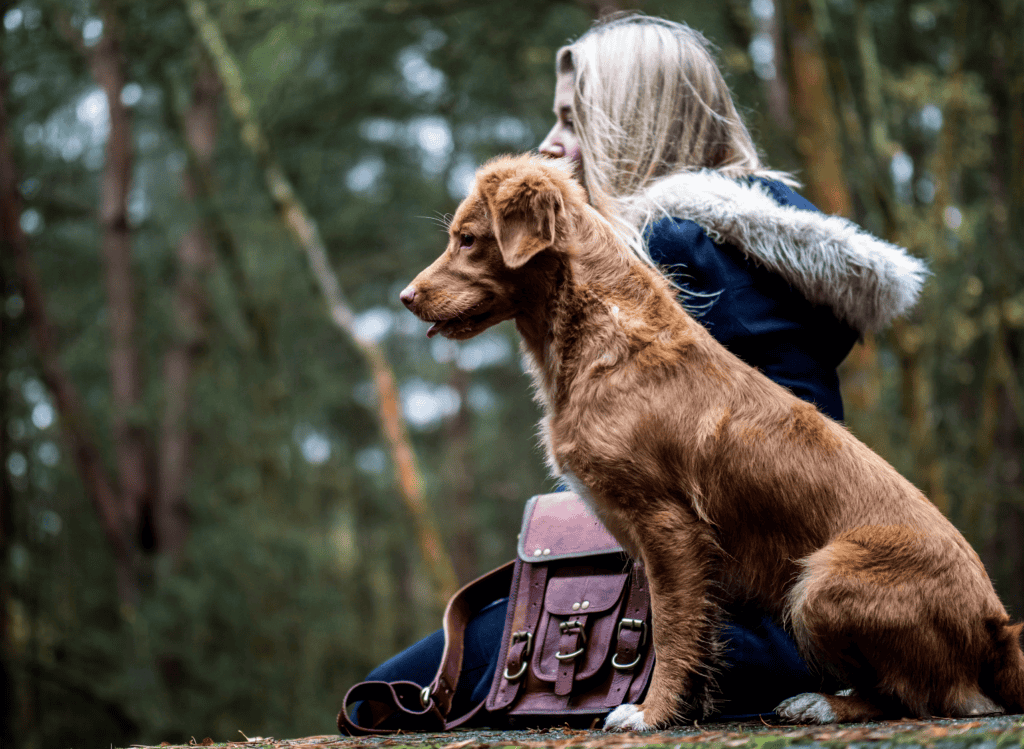Understanding and Managing This Behavior
Table of Contents
Introduction
Does your dog constantly sit on you, making it difficult to move or relax? While it can be endearing, it can also be quite frustrating when your furry friend insists on using you as their personal seat. You’re not alone, and there’s a reason behind this behavior. In this article, we’ll explore why your dog always sits on you and offer practical solutions to help you manage this behavior effectively.

Seeking Comfort and Security
Dogs are pack animals, and in the wild, they rely on their pack for safety and comfort. Sitting on you can make your dog feel secure and close to their pack leader.
Physical Contact for Security
- Warmth: Your body provides warmth, which is comforting to your dog.
- Safety: Being close to you makes your dog feel protected from potential threats.
- Companionship: Your presence offers emotional support and reduces anxiety.
Showing Affection and Bonding
Your dog loves you and wants to be close to you as a way of showing affection. This behavior strengthens the bond between you and your dog.
Signs of Affection
- Sitting on Your Lap: This is a direct way for your dog to show love and affection.
- Following You Around: This indicates their desire to be near you at all times.
- Nuzzling or Licking: These behaviors also signify affection.
Anxiety and Insecurity
Some dogs may develop anxiety or insecurity, leading them to seek constant physical contact with you for comfort.
Identifying Anxiety
- Restlessness: Your dog might be restless when not near you.
- Whining: Frequent whining can be a sign of anxiety.
- Pacing: Pacing around when you’re not in sight is another indicator.
To learn more about managing anxious behavior in dogs, check out our article on how to calm a puppy down for bed.
Dominance and Territorial Behavior
In some cases, your dog might sit on you to assert dominance or mark their territory. This is their way of claiming you as part of their territory.
Dominance Indicators
- Standing Over You: This can be a sign of dominance.
- Staring Intently: A dominant dog might stare at you intensely.
- Not Listening to Commands: A dominant dog might ignore your commands.
Seeking Attention
Your dog might simply want more attention from you. This could be due to boredom or lack of mental stimulation.
Attention-Seeking Behavior
- Pawing at You: This is a direct way of seeking your attention.
- Bringing Toys: Your dog might bring toys to initiate playtime.
- Barking: Excessive barking can be a plea for attention.
Health Issues
Sometimes, clingy behavior like sitting on you can be a sign of underlying health problems. If your dog suddenly becomes more clingy than usual, it might be worth a visit to the vet.
Potential Health Concerns
- Pain or Discomfort: Your dog might be seeking comfort due to pain.
- Illness: Certain illnesses can make your dog more dependent on you.
- Age-Related Issues: Older dogs might become clingier as they age.
For tips on handling other behavioral issues, you might find our guide on how to stop a dog from digging at the carpet helpful.
Practical Advice for Managing Clingy Behavior
Here are some actionable steps to help manage your dog’s clinginess:
- Establish a Routine: Dogs thrive on routine. Consistent feeding, walking, and playtime can help.
- Create a Cozy Space: Provide a comfortable bed or crate where your dog can relax.
- Use Positive Reinforcement: Reward your dog for staying in their designated space.
- Interactive Toys: Provide toys that keep your dog mentally stimulated.
FAQ Section
Why does my dog always sit on me instead of next to me? Your dog sits on you for warmth, comfort, and to feel close to you. It’s also a way to show affection.
Is it normal for my dog to always want to sit on me? Yes, it’s normal, especially for breeds that are known to be very attached to their owners.
How can I reduce my dog’s clinginess? Establish a routine, provide a comfortable space, and use positive reinforcement to encourage independence.
For tips on managing affectionate but sometimes troublesome behavior, read our article on dog mouthing affection.
Conclusion
Understanding why your dog always sits on you is the first step in managing this behavior. Whether it’s for comfort, affection, anxiety, attention, or due to health issues, there are ways to help your dog feel more secure and independent. By following the practical tips provided, you can create a balanced relationship with your furry friend.
*Disclosure: This post may contain affiliate links, meaning, I get a commission if you decide to make a purchase through one of my links, at no cost to you.
